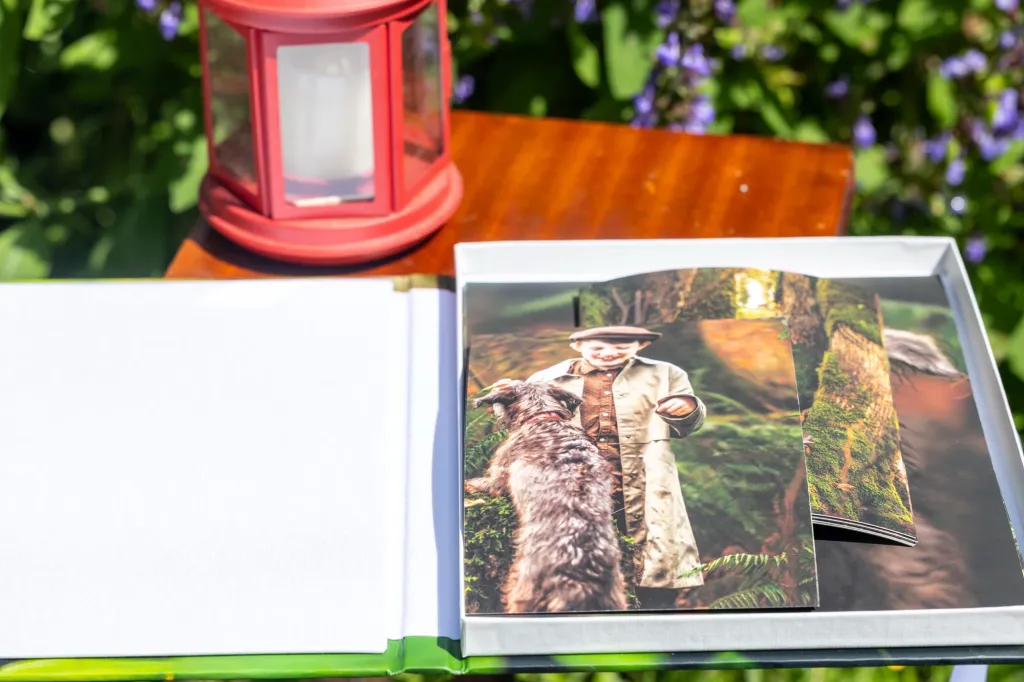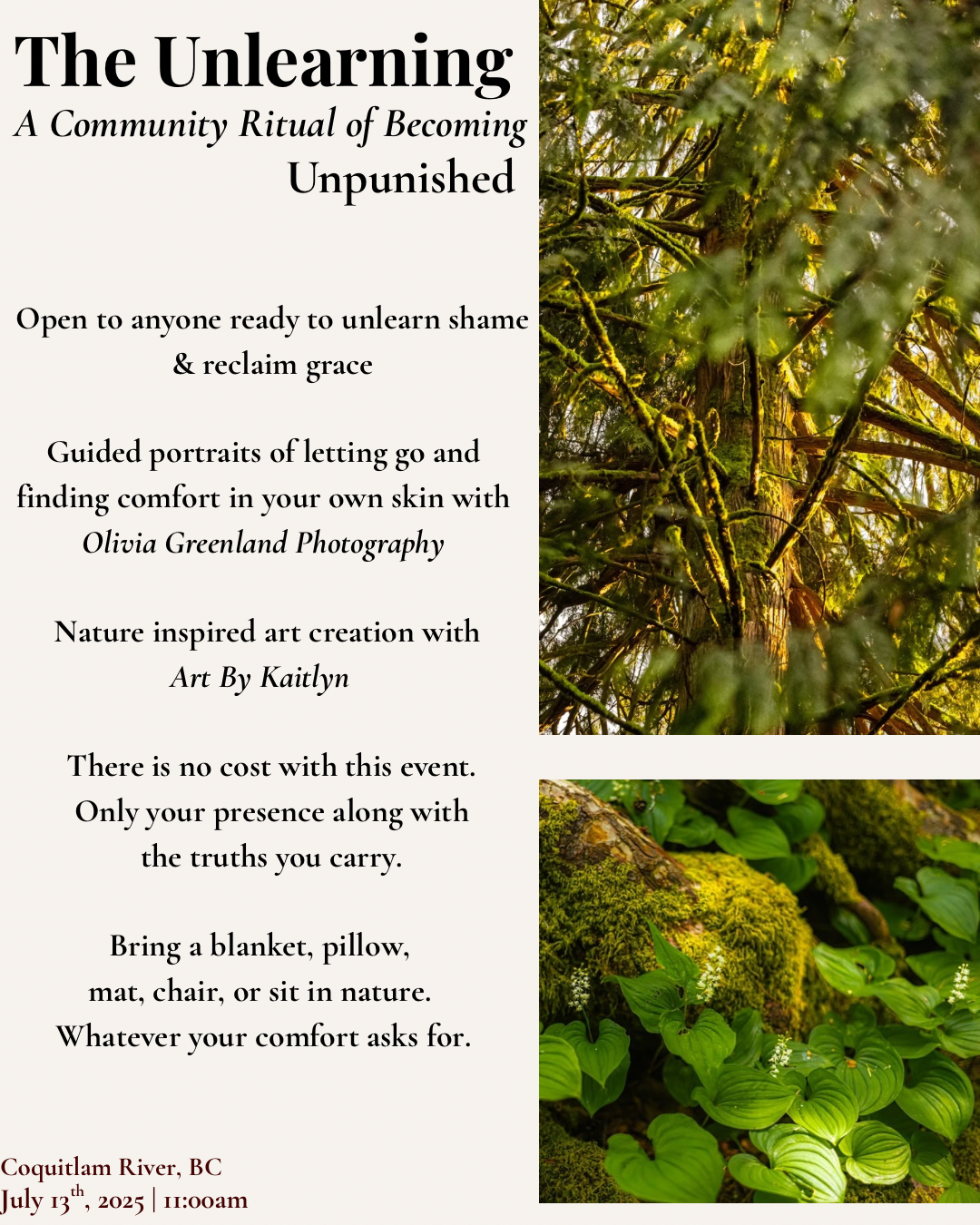The Journal
Mother Earth
Jun 17, 2025
Why I Photograph What the Earth Is Trying to Say

I know I’m a photographer. But what I really do is help people remember.
Remember themselves.
Their children.
Their animals.
Their grief.
Their beauty.
Perhaps maybe most importantly…. the Earth.
Because the Earth is not just a backdrop for your portraits.
She’s not “just” the forest light or the golden grass.
She’s a living being.
She’s tired. She feels the pressure like we all are right now.
So today’s blog post is a little different. It’s not about what to wear or how I style your session.
It’s about what matters.
It’s about why I do this… Why I photograph what time tries to take.
How you…. Yes you! Just by being real— can start to give something back.
The Earth Is Alive & She’s Exhausted.

The Earth is like a giant body.
She breathes. She feels. She remembers. Just like you.
But right now, too many people are yelling, hurting, and ignoring her.
Too many machines are poking her, pulling her, and telling her who she should be.
She’s tired and confused because her heartbeat; what keeps everything in rhythm— is being scrambled.
What can we do?
We help her remember her rhythm.
She is wounded.
She is asking for help that is simple and real.
Stop forcing the land into silence.
Let it breathe again.
Replace lawns with native plants.
Let leaves fall and stay.
Let the insects come back.
Restoration begins with permission.
Refuse poisons.
Stop using weedkillers, synthetic fertilizers, and pesticides.
They sterilize soil and erase the pathways Earth uses to heal.
Catch water. Use rain barrels.
Reuse what you can.
Stop wasting what is sacred.
Water carries memory and right now, the memory is being washed away.
Speak to the land out loud.
You do not need a belief system to say thank you. You only need presence. Touch the soil. Speak to the sky.
Let your words become resonance.
Let your intention become action.
Whatever you plant must feed something.
If it doesn’t feed bees, birds, fungi, or humans… It’s not part of the repair.

Simple Things That Heal the Earth’s Frequency
Here’s how anyone can help, even if they think all of this sounds silly:
1. Get Quiet Sometimes
Turn off your phone for 10 minutes.
Step outside. Feel the wind.
Breathe with your belly, not your chest.
That’s called “tuning in.” It calms your own noise so you don’t add more.
2. Touch the Ground
Your hands or feet. Doesn’t matter.
Grass. Dirt. Even a tree.
Just touch it and think something kind, even if it’s just “Thank you for holding me.” That’s called “grounding.”
It helps Earth feel you again.
3. Tell the Truth
Even if it’s just,
“I feel scared,”
“I feel tired,” or
“I feel confused.”
That’s called “resonance.” Real words have power. They clean up fake ones.
4. Don’t Be a Jerk to Water
Water holds memory.
Don’t flush weird stuff. Don’t throw trash in rivers.
When you drink it, say “thank you” once. That’s all.
5. Help Someone Feel Seen
Even one person. Even yourself.
That’s called syncing. And when two hearts sync, the Earth feels it.
6. Don’t Laugh at People Who Feel Too Much
Sometimes those “weirdos” are carrying signals no one else can hear.
Let them. You don’t have to understand

What If Saving the Earth Isn’t Big, Just Honest?
Most importantly?
Mean what you do.
Because Earth doesn’t hear your words.
She hears your intention.
She hears what’s behind the action.
Even one kind, honest act…
ripples.
That ripple?
Is louder than a scream.
You don’t need to believe in energy, or spirits, or the sky falling.
You just need to be real.
Because the Earth knows real when she feels it.
She’s listening.
Even now.
Right now the world is not fine.
The Earth is struggling to remember herself. Her systems are unraveling. Her rhythm is breaking. She is being rewritten.
You do not need to believe in energy fields to feel it.

The Oak Tree: A Legacy Worth Rooting
“If we plant the right trees, in the right places, we can re-green the lungs of the planet.”— Diana Befesford-Kroeger
Plant an oak.
If oaks are native to your region, this is one of the most powerful acts you can do.
Why?
Every oak planted is like installing a hard drive of biodiversity. One oak can support over 500 species of caterpillars alone, feeding birds and pollinators.
They defy urgency. They embody legacy over speed.
We need to plant for the next generation, not for immediate beauty.
Planting an oak is an act of faith in continuity.
Old traditions didn’t worship oaks for shade. They called them the axis trees. The ones that connect heaven to earth.
Energetically, oak trees stabilize vibrational noise. Even skeptics feel calmer near one. Because, it’s not about belief with Oaks.
They are powerful air purifiers. They absorb carbon, filter toxins, and release phytochemical compounds that calm the nervous system. This means they don’t just clean the air. They co-regulate with us.
If you want Earth to have elders again, if you want shade that doesn’t come from concrete overpasses, if you want your children or someone else’s to walk under something that wasn’t built for profit… Plant an oak.
It might not give you quick beauty.
But it will give the Earth her bones back.
Best Oak Species by Region
Eastern North America
White Oak (Quercus alba)
The anchor species for eastern forests. Resilient, long-lived, and vital to pollinators and birds. A keystone tree of memory and balance.
Midwest & Plains (U.S. + Canadian Prairie Edge)
Bur Oak (Quercus macrocarpa)
Found naturally extending into Manitoba and even parts of Saskatchewan. One of the most cold-hardy oaks. Drought-resistant. Prairie-adapted. A true survivor.
Southern U.S. Coastal Zones
Live Oak (Quercus virginiana)
Iconic of the American South. While not suited to colder climates, it’s a powerful stabilizer in subtropical restoration work.
California / Arid West
Blue Oak (Quercus douglasii)
or
Valley Oak (Quercus lobata)
Deeply adapted to California’s rhythms. If you’re in interior southern BC with warming trends, these may one day thrive—but only with care and climate foresight.
Europe
English Oak (Quercus robur)
Often planted ornamentally in British Columbia. Not native—but widely adapted in temperate regions. Can be a beneficial addition if planted with soil integrity.
Mediterranean Climates
Cork Oak (Quercus suber)
Suits regions with dry summers and wet winters. Think: Mediterranean Basin, coastal California. Not for cold Canadian winters.
British Columbia & Interior Canada (Temperate to Subalpine)
There are no true native oaks in the wild forests of most of BC or Alberta.
However, you can still plant with intention:
• Bur Oak (Quercus macrocarpa) Is the best cold-hardy choice for Alberta or BC’s interior zones
• Garry Oak (Quercus garryana) Is native to southern Vancouver Island, Puget Sound, and parts of coastal BC.
This is the true native for BC. Rare. Sacred. Incredibly important. Plant where it belongs.
This Is Writing Your Legacy

Unplug.
Speak truth.
Touch soil.
Let grief out.
Hold someone.
Stop lying to yourself.
Because every honest action sends a signal. The Earth responds to resonance, not perfection.
If this moved you… let it guide you.
If you’re ready to be photographed in a way that reflects who you truly are, not just how you look…
Let’s create imagery that means something.
Not just for you, but for the Earth too.
Because beauty when it’s rooted in truth, becomes legacy.
🌿 Plant an oak
💬 Share this post
🐦🔥 Be real
You know what? If a personal shoot doesn’t feel like your path right now OR if you want to add something even deeper to it… I create one of a kind, mixed media nature prints that are honestly my whole heart.
They’re hand-painted, museum-quality, infused with frequency, and unlike anything you’ve seen.
Every one of them holds breath, intention, and real presence.
They’re not just art. They’re alive.
Let the wild hang on your wall.
Written and witnessed by Olivia Greenland [Photography]. Photographer of the sacred, the soulful, and the still-wild.

